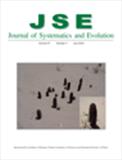Xian-Lan DENG, Xing-Jin HE, Wei-Lue HE, Yun-Dong GAO, Hai-Yan LIU, Yu-Cheng ZHANG
In the present study, the karyotypes of 34 populations belonging to 11 species and one variety of Heracleum from the Hengduan Mountains in China were examined. Chromosome numbers and the karyotypes of three species (H. souliei, H. kingdoni, and H. wenchuanense) are reported for the first time, as are the karyotypes of H. moellendorffii and H. henryi (tetraploid). Populations of H. candicans, H. franchetii, and H. kingdoni in the Hengduan Mountains were found to consist of a mixture of diploid and tetraploid plants. Except for four species of Heracleum, namely H. candicans, H. franchetii, H. henryi, and H. kingdoni, which have both diploid and tetraploid karyotypes, all other species of Heracleum are were found to be diploid. All karyotypes were found to belong to the 2A type of Stebbins, with the exception of H. candicans var. obtusifolium, which belongs to 2B, and H. hemsleyanum and H. franchetii (Mt. Dujuan, Daocheng, Sichuan, China), which belong to 1A. There was only a slight difference in the karyotype asymmetry index, which suggests a close kinship for species of Heracleum and that the entire phylogenetic development of Heracleum is relatively primitive. Species that exhibited advanced morphological features were also more advanced in karyotype structure, with the order of karyotype evolution being 1A→2A→2B. This phenomenon indicates that the species distributed in the Hengduan Mountains have not diverged completely and that the Hengduan Mountains are a relatively young and active area for the evolution of Heracleum. Polyploidization in Heracleum may be an important evolutionary mechanisms for some species, generating diversity. The biological attributes, distribution range, and the geological history of the genus have all played a part in accelerating the evolution through polyploidization or aneuploidization. It is known that as the distribution latitude of Heracleum decreases from north to south, the chromosome number, ploidy level, and asymmetry structure appear to increase. In the Hengduan Mountains, these tendencies are also evident. Finally, based on all the available cytogeographic data, we speculate that the more advanced tetraplont or aneuploid species of Heracleum in India may be derived from early diplont species that were distributed in the Caucasus region and Hengduan Mountains. The dispersal of Heracleum was from Eurasia to India, because this correlates with the emergence of the Himalayan Mountains through tectonic movement. Thus, the Hengduan Mountains are not only a center of diversity for Heracleum, but also a center of active speciation in modern times.

